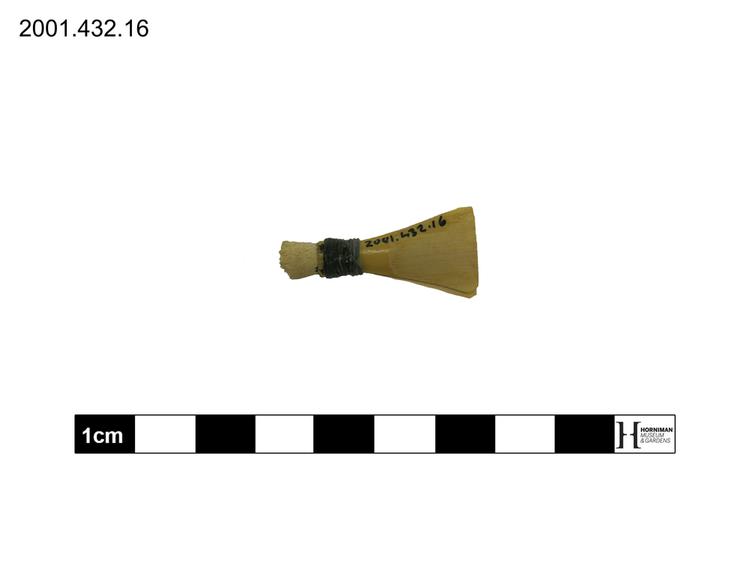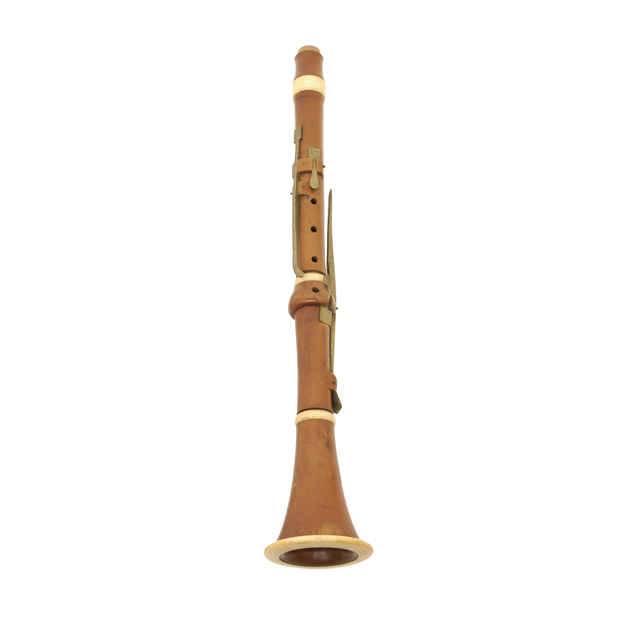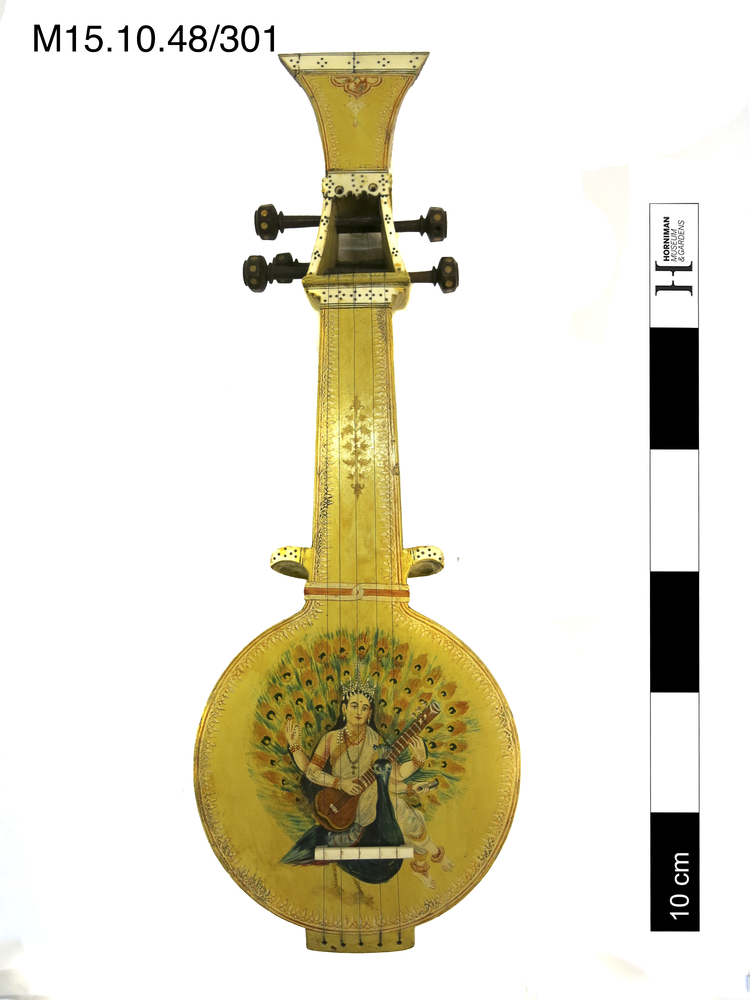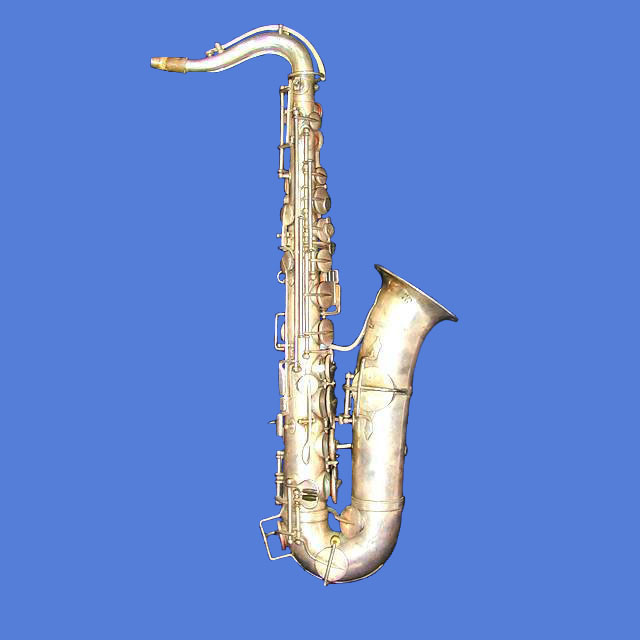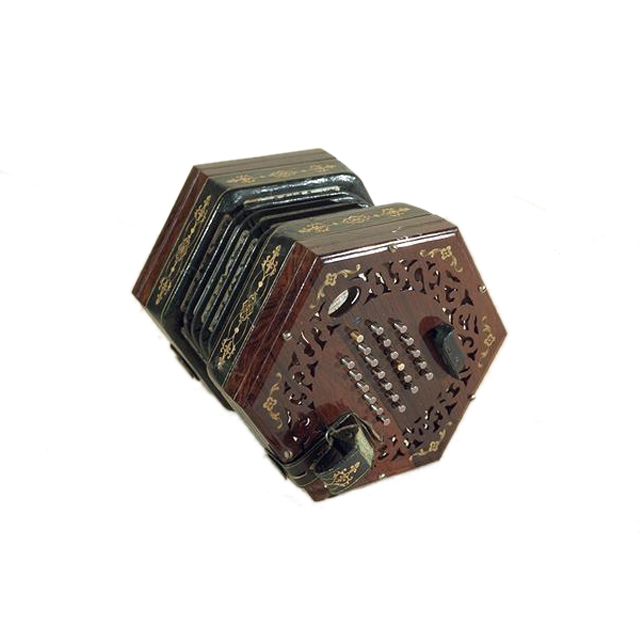
English system concertina. Serial number 6626. Oval paper label: 'By Her Majesty's Letters Patent, C. Wheatstone, Inventor, 20 Conduit St., Regent St., London.' One bellow fold labelled: 'Wheatstone & Co.' Rosewood ends built to standard width: 6.25 inches across parallel sides. Ends with fretwork, brass floral inlays, and bevelled edges. 48 keys: 24 each side. Silver capped and gilt buttons, bushed. Gilt embossed green leather straps, nickel screws. Five-fold green leather bellows, fully embossed in gilt, with green and gold papers. Round-end brass reeds, with circular pan label. Hexagonal rosewood case, in fitted hexagonal leather outer case with leather handle.
The English-system concertina was patented by Charles Wheatstone in 1844. This example with its brass inlay and decorative bellows, was one of the more expensive examples produced by the Wheatstone concertina factory. The following information is recorded regarding the purchase of this instrument in the ledgers of the Wheatstone & Co. concertina factory (http://www.horniman.info): 2 Nov 1854: Ja[me]s Goff Esq 12 1/8 Paid (C1049, p.30). The concertina is classified according to the system of Hornbostel and Sachs as a 'set of free reeds, with flexible air reservoir and keyboard'.



